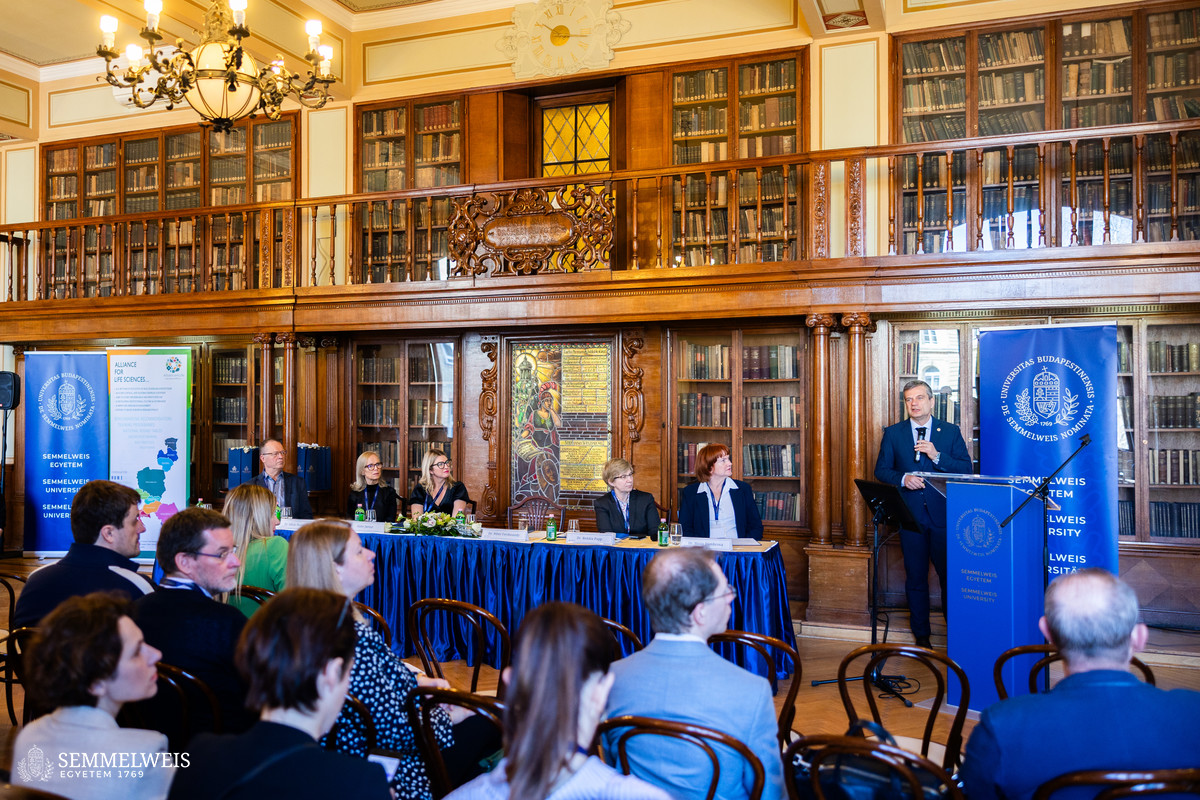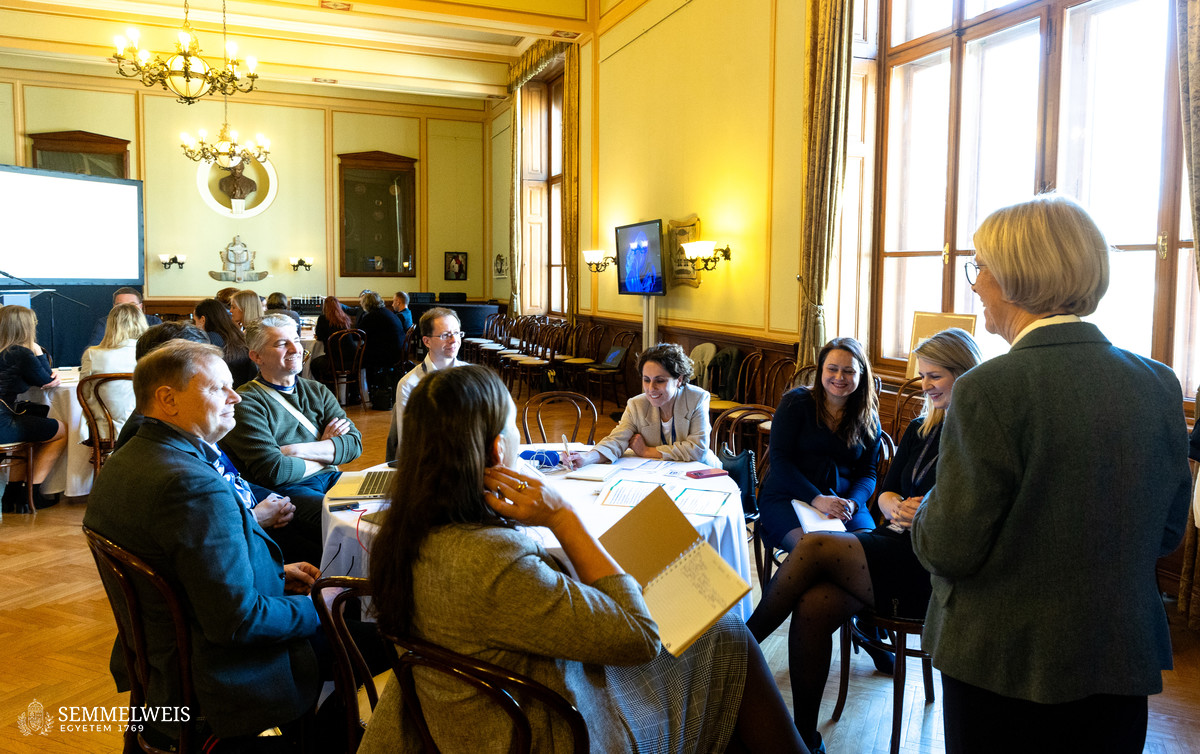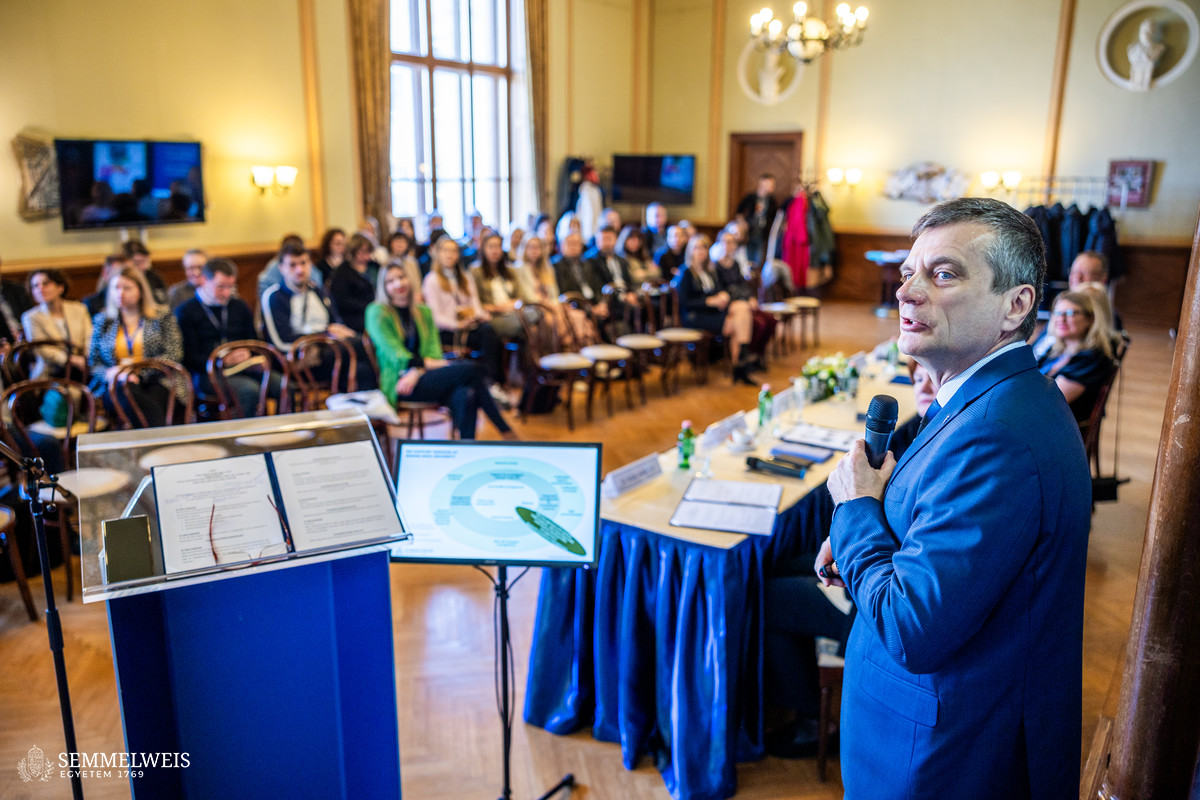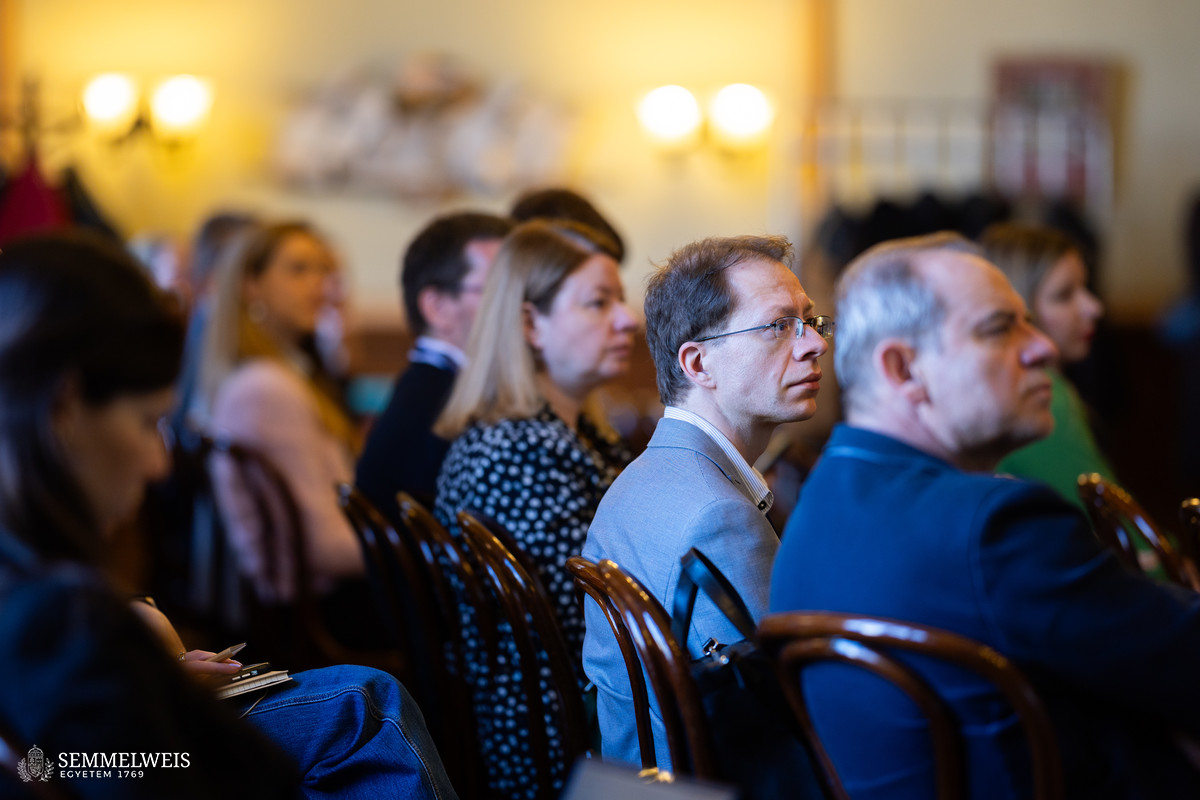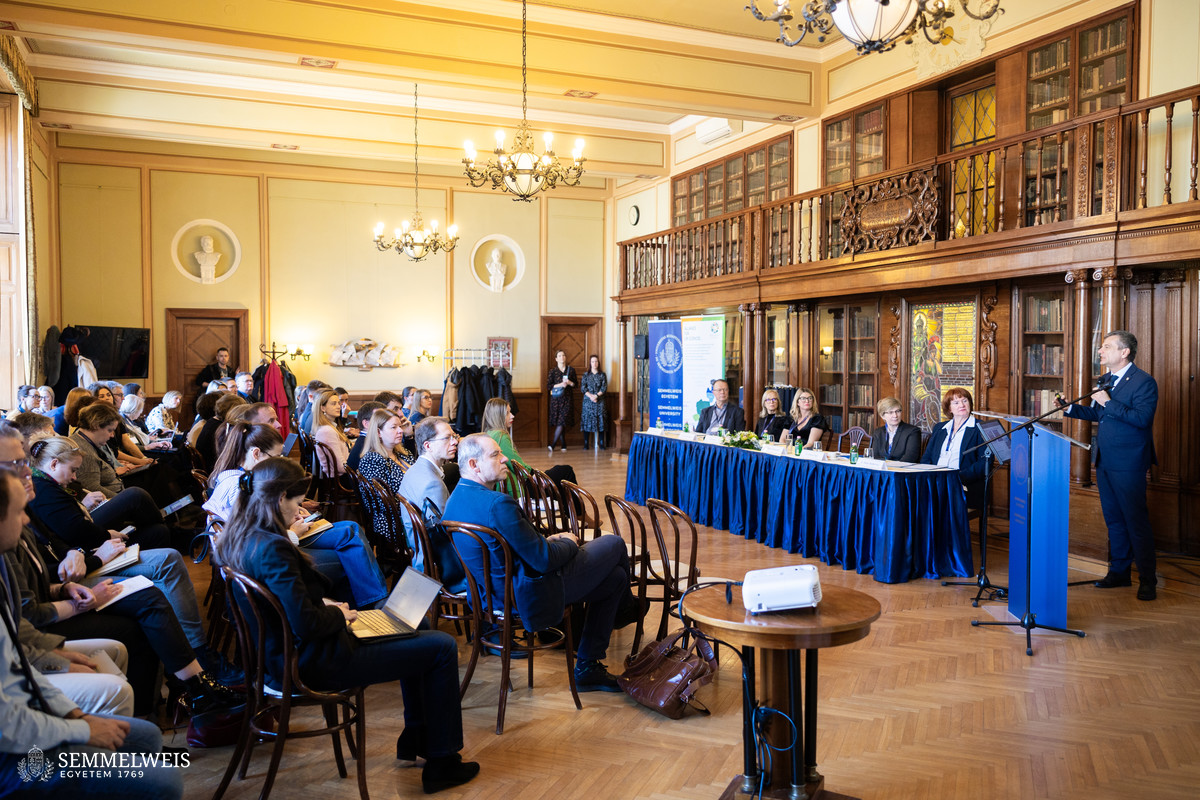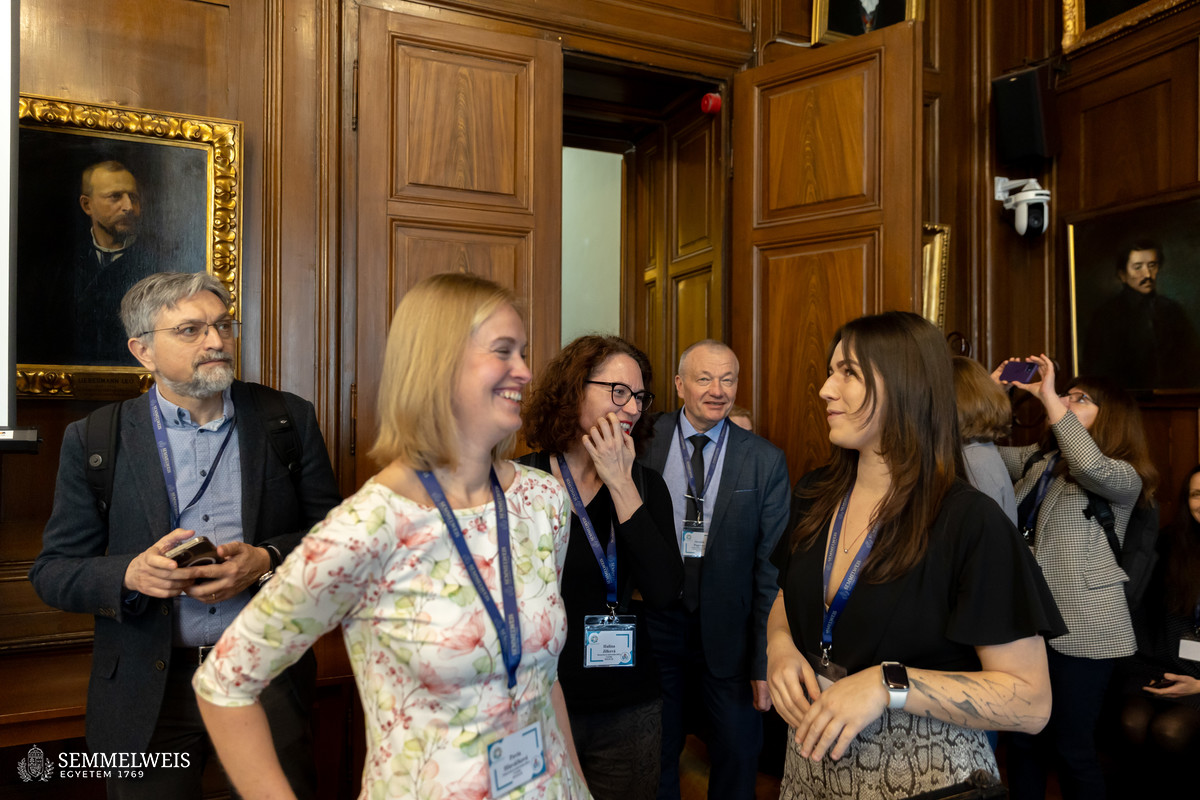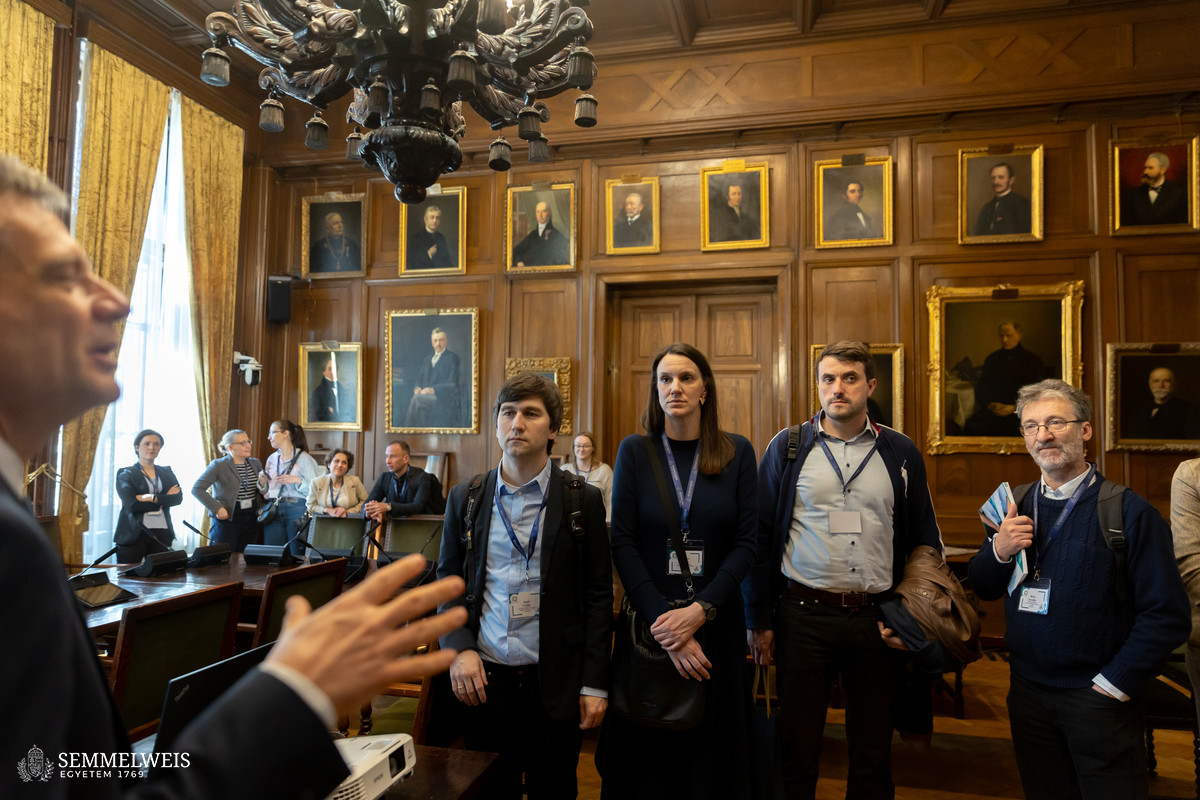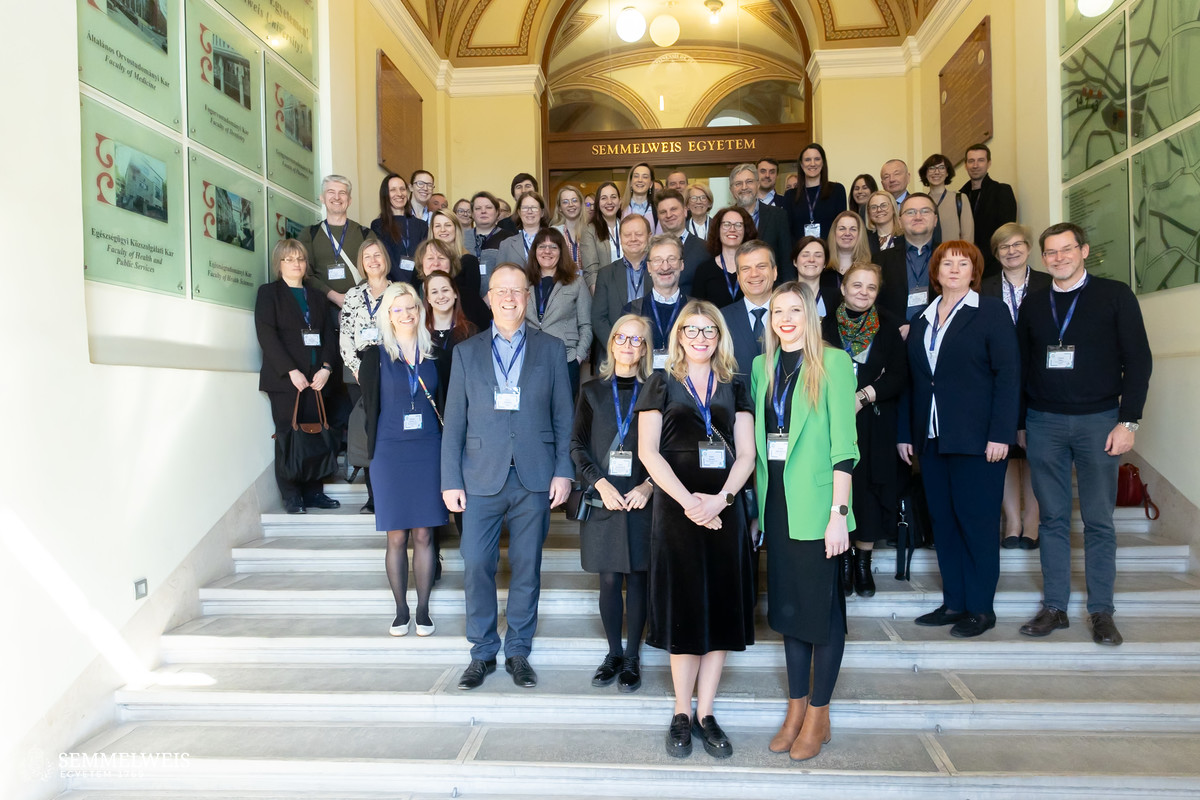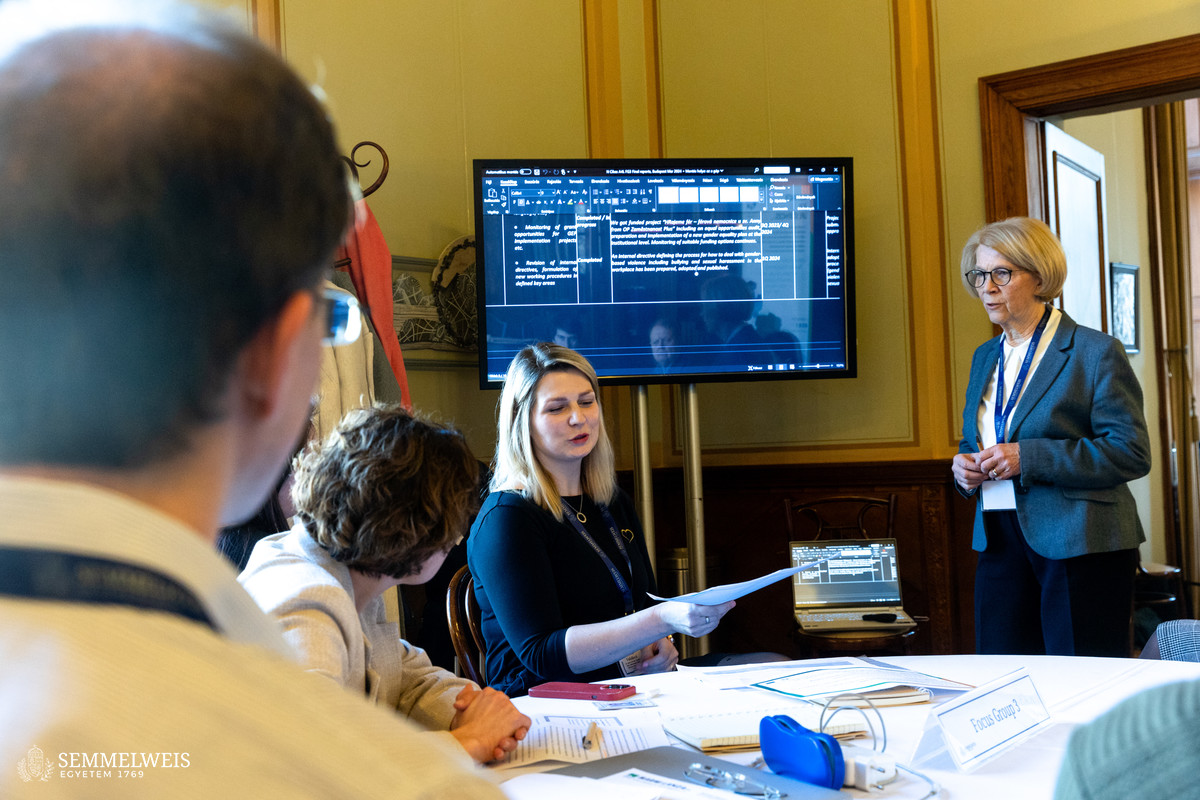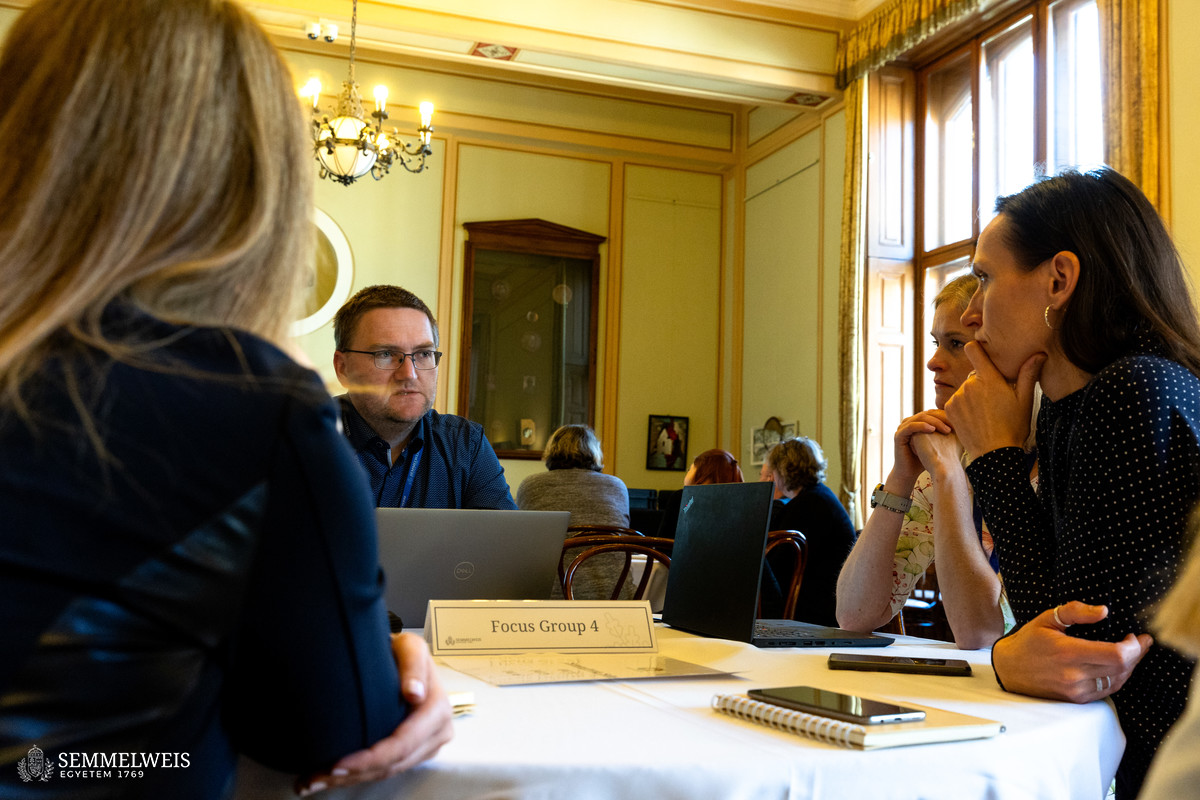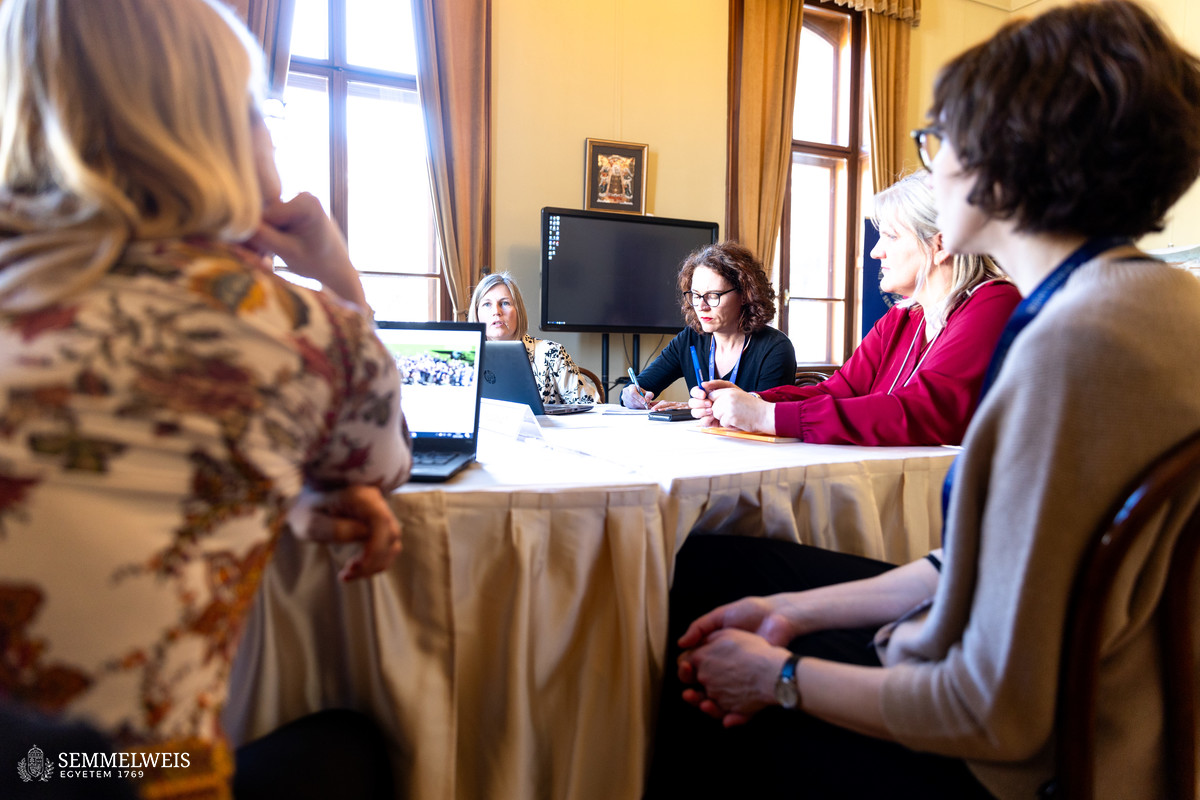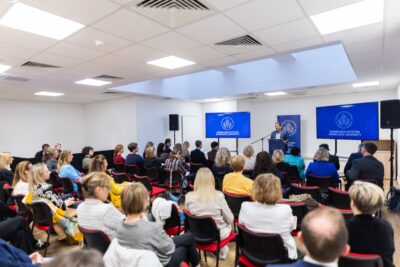Formed in 2018 by 12 health research institutions from 11 Central and Eastern European countries, the Alliance for Life Sciences consortium aims to further develop the participants’ institutional strategic management of R&D and innovation, and to serve as a model for improving the conditions for scientific research in the region.
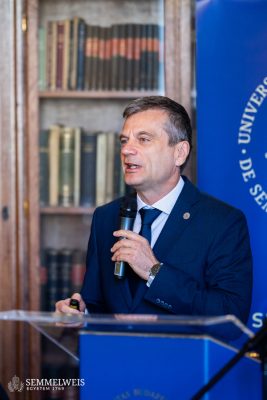 The initial plenary session was opened by Dr. Péter Ferdinandy, Vice-Rector for Science and Innovations at Semmelweis University. He introduced Semmelweis’s position in international rankings and gave account of the growing significance of its international campuses within Europe, with a total student enrolment of 15,000 from all around the world. According to him, there is a steep increase in the number of active PhD students (who will increase the scientific output) as well as the citation number of university publications. Dr. Péter Ferdinandy then outlined the university’s most important research, development and innnovation (RDI) goals and support system, stressing that in order to accelerate innovation, they would like to improve incubation services for early-stage projects, support the creation and management of spin-off companies and the planned Science Park, to strengthen cooperation between Semmelweis and industrial partners.
The initial plenary session was opened by Dr. Péter Ferdinandy, Vice-Rector for Science and Innovations at Semmelweis University. He introduced Semmelweis’s position in international rankings and gave account of the growing significance of its international campuses within Europe, with a total student enrolment of 15,000 from all around the world. According to him, there is a steep increase in the number of active PhD students (who will increase the scientific output) as well as the citation number of university publications. Dr. Péter Ferdinandy then outlined the university’s most important research, development and innnovation (RDI) goals and support system, stressing that in order to accelerate innovation, they would like to improve incubation services for early-stage projects, support the creation and management of spin-off companies and the planned Science Park, to strengthen cooperation between Semmelweis and industrial partners.
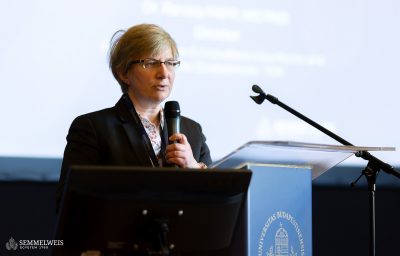 Dr. Renáta Papp, Director of the Center of Science and Innovation Vice-Rector and Business Development (TÜK), presented the RDI support services available at the university. The aim is first and foremost to strengthen market partnerships and attract professional and financial investors, and, as mentioned, the center is involved in the management of specialized research infrastructures (core facilities), the protection and utilizaiton of intellectual property, the organization of training courses to support innovation activities, and plans to set up the Semmelweis Innovation Club in the near future, with the primary aim of promoting spin-off companies.
Dr. Renáta Papp, Director of the Center of Science and Innovation Vice-Rector and Business Development (TÜK), presented the RDI support services available at the university. The aim is first and foremost to strengthen market partnerships and attract professional and financial investors, and, as mentioned, the center is involved in the management of specialized research infrastructures (core facilities), the protection and utilizaiton of intellectual property, the organization of training courses to support innovation activities, and plans to set up the Semmelweis Innovation Club in the near future, with the primary aim of promoting spin-off companies.
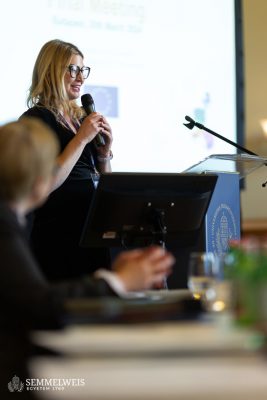 Ester Jarour, the project’s coordinator, Head of Strategic Partnerships & International Relations at the Central European Institute of Technology – Masaryk University (CEITEC MU) introduced the consortium’s achievements so far. According to the coordinator, the primary focus is on implementing successfully piloted good practices into actions. Their vision is translated into five main work packages: to build a culture that nurtures excellence in science, develop recognition and trust towards CEE research, nurture scientific talent to globally competitive careers, increase the local and regional impact of health research in CEE, and co-create conditions in CEE by engaging on national and European level. In numbers, besides further efforts, all that work is mirrored in 8 seed funding projects, 28 core facility projects, 3 research management and administration (RMA) academies, 3 skills courses, 3 early stage researchers’ (ESR) retreats, 3 thematic mini conferences, 4 community meetings, and over 20 so-called trigger events, she said.
Ester Jarour, the project’s coordinator, Head of Strategic Partnerships & International Relations at the Central European Institute of Technology – Masaryk University (CEITEC MU) introduced the consortium’s achievements so far. According to the coordinator, the primary focus is on implementing successfully piloted good practices into actions. Their vision is translated into five main work packages: to build a culture that nurtures excellence in science, develop recognition and trust towards CEE research, nurture scientific talent to globally competitive careers, increase the local and regional impact of health research in CEE, and co-create conditions in CEE by engaging on national and European level. In numbers, besides further efforts, all that work is mirrored in 8 seed funding projects, 28 core facility projects, 3 research management and administration (RMA) academies, 3 skills courses, 3 early stage researchers’ (ESR) retreats, 3 thematic mini conferences, 4 community meetings, and over 20 so-called trigger events, she said.
As the drawdown of funds for the previous cycle project ends in April 2024, the final project report is planned to be prepared in May, noted Ivana Sekaninová, Project Manager of CEITEC MU, who presented the technical information on the final report.
In the second half of the first plenary session, Dr. Zoltán Benyó, President of the Doctoral Council introduced the School of PhD Studies at Semmelweis University, whose 11 divisions cover all disciplines of medicine and health sciences. In recent years, the number of active PhD students increased 2.5 times to stimulate the university’s scientific output. Within that, the rate of international PhD students is also steadily growing, in accordance with the institution’s long-term vision of reaching the one-third ratio. This academic year, the number of PhD degrees awarded is expected to exceed 200. Although the minimal requirement is to have at least one first-authored and one co-authored publication, students publish an average of more than two first-authored papers, with more than half of them appearing in Q1 journals. As a newly introduced requirement, only publications in Q1 and Q2 journals will be accepted in the future. Besides the Conventional PhD Program, the MD/DMD/PharmD/MSc – PhD Excellence Program and the Individual PhD Program ensure that all aspiring scientists find a suitable training pathway.
General Vice Director Dr. Gábor Varga presented the mission and model of the Centre for Translational Medicine. Their Training Program, established 3 years ago in coordination with the Doctoral School, currently accounts for 20 percent of PhD students, but welcomes MSc students and postdoctoral researchers as well. The reason for introducing the translational approach was to filter and optimize the utilization of the exponentially growing number of scientific publications, gaining the practical knowledge that will ultimately contribute to reducing avoidable deaths. The new model of learning by doing manages to directly channel research into healthcare with breakthrough benefits and outstanding academic results. Every project is executed in teamwork, with the students being supported by supervisors, advisors, and a group of biostatisticians, with seminar lectures and webinars showcasing leading scientists and Nobel laureates as well. The scheme is not restricted to certain fields of science, as besides medicine, dentistry, pharmacy, and nursing fields are also featured in this program, pointed out Dr. Gábor Varga.
Viktória Kiss, Judit Szabados-Dőtsch
Photo: Bálint Barta – Semmelweis University
